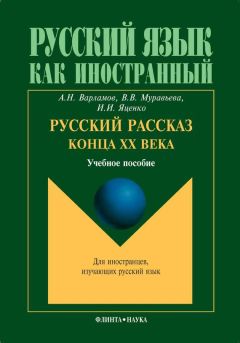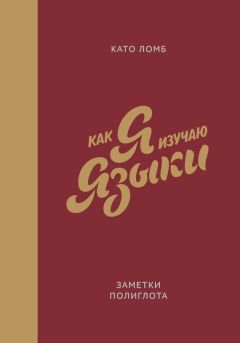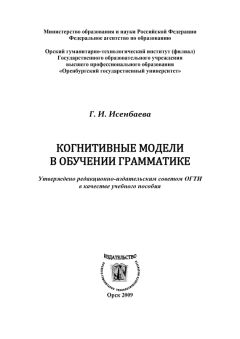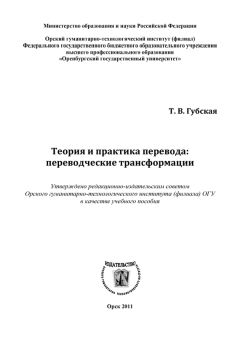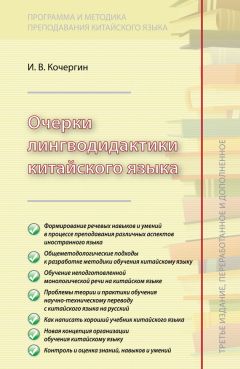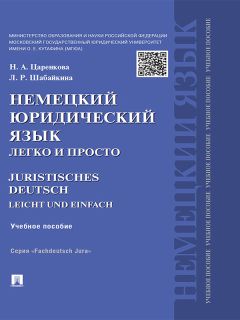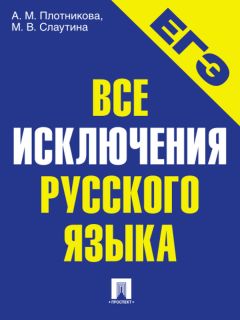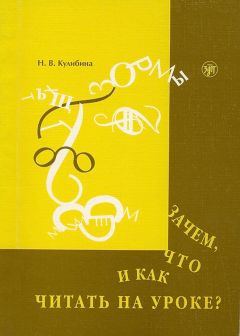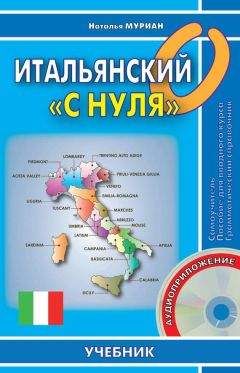Коллектив авторов - Молодежь о проблемах изучения иностранных языков в современном мире
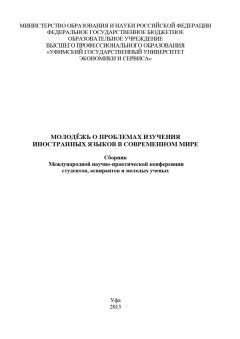
Все авторские права соблюдены. Напишите нам, если Вы не согласны.
Описание книги "Молодежь о проблемах изучения иностранных языков в современном мире"
Описание и краткое содержание "Молодежь о проблемах изучения иностранных языков в современном мире" читать бесплатно онлайн.
В сборнике представлены материалы научно-практической конференции, состоявшейся в УГУЭС 25 ноября 2013 года.
Ornament language.
Ornament is one of the most ancient forms of graphic activity of the person, known since the paleolith. In Latin "ornament" means "pattern". Initial images were artless: branch, the splinter of the cockleshell which was carried out on crude clay, or the seeds of plants pressed into it. Over time real seeds were replaced with their images. Already during a neolith era the ornament of ceramics represented not a casual set of strokes, strips, hyphens, and thought over, in composition the verified drawing filled with the symbolical contents [2].
Really, a language basis, an organizing kernel and the most important substantial element of complete system of culture, a form of transfer of centuries-old experience, socio-cultural values and meanings, means of expression of cultural identification, communication in information society are signs and symbols. They participate in forming texts of culture as which sign systems both the spiritual and the material world can be considered. Ability "to read out" these texts becomes a basis of mutual understanding, forming of dialogue and compromise search for tolerant coexistence of various traditional communities.
And one of the universal languages of culture which contains deep layer of ethnic memory of people, archetypes of their attitude, specifics of mental features, traditional arts and crafts in which the special place occupies an ornament are [3].
"Any ornament we read like a book because in it there is "alphabet", thoughts, plots, history, the relation to the world. And the language of symbols, lines, colors, a rhythm it speaks about people: what it, what temperament at it, character, destiny. Ornament is not simply an ornament. Often it contains certain constant image which is transferred from generation to generation. Except esthetic function, ornament has also a symbolical function. Without it it is like a house without icons. Since pagan times in ornaments there was some kind of prayer. For example, the tradition is known to put on certain clothes on a certain holiday and only with such embroidery. So, during sowing Slavic sowers put on shirts with a rhombic ornament since it symbolized the sowed field and, naturally, it was inadmissible to put on something another," – notes Konstantin Klimov, the chair of the department of history of arts of UDGU, a doctor of art, a professor.
On embroidery on an apron or a shirt of the Udmurt woman it was possible to learn a lot of things: from what villages it is, how many children she had, and from the costume as a whole – her age, family status, social status.
Rhombus – an order wish to the good owner, the sowed field or information on number of sons. Later rhombus is a gingerbread, a prosperity symbol. The circle, semicircle, a rhombus with radial beams or a cross – a sun symbol, preserved against evil ghosts, "kuak" – a heavenly tree of life and preserved against a malefice and diseases. In the 15th century on female bibs (kabachi) there is a moon symbol – an eight-final star with diamond-shaped beams without which it was impossible to play weddings. In Israel such sign is known since the 1-3rd centuries [4].
In the Buryat culture, as well as in the majority of traditional cultures, the ornament is the most ancient type of graphic designs. At the Buryat all was exposed to Ornamentation practically: clothes, jewelry, house utensils, dwelling, cult subjects, weapon and many other things. Value and relevance of this universal language is defined not only a special role of an ornament in traditional culture of Buryatia, but also and that the ornament can be considered in synthesis of sacral value and symbolics in a context of verbal and nonverbal communications [5].
Bashkir ornament.
For the Bashkir ornament – are characteristic as geometrical, and it is curvilinear – vegetable patterns. The form depends on execution equipment. Geometrical motives, are executed in equipment of calculating embroideries and in weaving. Curvilinearly – vegetable – in equipment of application, a stamping, a silver notch, in equipment of free embroideries (the platform, or "a slanting grid"). Usually patterns were put on a tree, skin, metal, a cloth. Ornamentation receptions are diverse: carving and list on a tree, a stamping and a carving on skin, metal processing, application, abusive and mortgage weaving, knitting, an embroidery.
The Bashkir ornament – one of the phenomena of the national Bashkir culture, the originality which has reflected it and peculiar features. The ornament for the Bashkir people was the only form of art and graphic creativity. Almost total absence in the Bashkir folk art of realistic images of animals, people and landscapes was caused by influence of Islamic culture, namely – a ban of Islam to represent the live. Islam not only excluded from art all other images, except an ornament, but also defined an extreme stilizovannost of its form, distribution of a geometrical ornament. Nevertheless, northern areas of the Muslim world knew broad application of images of animals in an ornament, a thicket stylized, and sometimes even rather realistic character.
The Bashkir ornament (both separate elements, and all composition) is almost always symmetric. The whole world contains the phenomena only in opposition: day – night, life – death, light – darkness, man's – female, left – right, etc. It is shown through symmetry of resisting figures of animals. In order that contrasts in mutual fight didn't destroy each other, the third element of composition, their differentiating – golden mean, a reference point, the symbolical image of an axis of the world is necessary. Thus, in an ornament ancient ideas of a triple rhythm of life, characteristic for the majority of the people were reflected.
In similar compositions the female figure, sometimes the tree image most often was central. Sometimes the central place was taken by a symbolical rhombus. Such replacements aren't casual and logical as also a female figure (an image of the goddess of all real), and the tree (a life tree), and a rhombus (an earth arable land symbol) are symbols of fertility, the life source.
On Bashkir kharaus it is possible to meet as strongly stylized anthropomorphous figure in the composition center, and the tree image.
Composition of patterns Bashkir kharaus has many options. It can't be considered as simple loan of an ornamental plot. Connection in one composition of horses, a tree, the person, birds doesn't contradict national representations. "In the Bashkir folklore, – researcher M. M. Sagitov notes, – in critical situations the horse becomes a sacred patrimonial tree of the poplar which mighty branches lift the hero on inaccessible height and that rescue from the enemy persecutor. The motive of transformation of a horse in a patrimonial tree is characteristic for the TurkicMongolian epos" [6-9].
Data on spiritual culture the Bashkir testify that preconditions for preservation of the representations which have been originally connected with a horse, were great, and with a deer and a rooster – aren't so considerable. Possibly, in the Bashkir culture the initial symbolics remained in the most general terms: this composition was comprehended as a good wish of fertility and in connection with the "life-deaththe new birth" complex [10].
References1. http://www.langust.ru/review/lang_h02.shtml#02_01
2. Kuzeev R. G., Bikbulatov N. V., Shitova S. N. Decorative creativity of the Bashkir people. Ufa: Bashk. branch of Academy of Sciences of the USSR, 1979, 244 p.
3. Dulgarov A.Ya. Semantics of an ornament in the Buryat Buddhist architecture, 2010, the thesis on competition of a scientific degree the candidate culturologists. Ulan-Ude, specialty: Theory and cultural history. 193 pages, as the manuscript.
4. Udmurtskaya pravda, No. 4 (24545), 15.01.2010.
5. Dulgarov A.Ya. Semantics of an ornament in the Buryat Buddhist architecture, 2010, the thesis on competition of a scientific degree the candidate culturologists. Ulan-Ude, specialty: Theory and cultural history. 193 pages, as the manuscript.
6. History and culture of Bashkortostan, studies book. Ufa, UGNTU, 2001, 107 pages.
7. Hisametdinov F.G. history and culture of Bashkortostan. Studies. the settlement for studies, 2nd prod. and additional – Ufa, Gilem, 2003. -280 Art.
8. Culture of the people of Bashkortostan: history and present. Materials region. Науч. Conference. devoted to memory D.Zh.Valeev-s/edition of Z.Ya of Rakhmatullin, Ufa, RIO BGU, 2003, 282 pages.
9. Karimov K.K. Culture of Bashkortostan (1917-2000). Ufa, Gilem, 2006, on: http://www.bibliofond.ru/view.aspx?id=17310#1
10. Nikonorova E.E. Ornament of a calculating embroidery the Bashkir (genesis and development), the thesis Abstract on competition of a scientific degree of the candidate of historical sciences, 07.00. 07 – etiology (ethnography), Ufa, 1998, as the manuscript.
CROSS-CULTURAL COMMUNICATION: NON-VERBIAL BEHAVIOUR
УДК 316.772.2
KHASANOV A.
St Clare’s College, Oxford, UK
Among the most markedly varying dimensions of intercultural communication is nonverbal behavior. Knowledge of a culture conveyed through what a person says represents only a portion of what that person has communicated. Much of nonverbal communication may be broken down into six areas: dress; kinesics, or body language; oculesics, or eye contact; haptics, or touching behavior; proxemics, or the use of body space; and paralanguage. Any one of these areas communicates significant information nonverbally in any given culture.
One of the most apparent differences is the interpretation of dress. The message given by polished shoes, for instance, could easily be lost on a culture in which sandals are the standard footwear. Even when cultures share similar forms of dress, the message inherent in the choice of clothing is not always the same. For instance, the selection of a conservative tie for a formal negotiation might well be shared by several cultures, but exactly what a conservative tie is remains determined by the standards that prevail in that particular culture. Thus, what is a conservative tie in one culture may seem unconservative in another, giving a different message altogether.
Just as importantly, people often bring to a cross-cultural meeting ethnocentric prejudices regarding what they believe to be proper dress. Thus, a European or American may condemn as somehow less than civilized a Saudi or Iranian in traditional garb. Conversely, a Saudi or Iranian may well consider as flagrantly immoral the bare face, arms, and legs of a European or American woman in business attire.
Nonverbal behavioral differences in kinesics may be less obvious than dress differences. How people walk, gesture, bow, stand, or sit are all, to a large part, culturally determined. In many cases, a kinesic sign well understood in one culture is totally unknown in another culture. In Indonesia and in much of the Arab world, for example, it is offensive to show the soles of one's feet to another. In Japan, a relatively elaborate system of bowing is common but has no counterpart in the United States. This entire system of nonverbal communication is therefore generally lost on most U.S. businesspeople.
Some kinesic behavior may carry distinctly different meanings in more than one culture. In such cases, all parties recognize the gesture, but interpret it differently. During George Bush's visit to Australia while he was president, he held up two fingers in a V sign. In both countries the symbol is widely understood, but in the United States the "V" emblem is a sign of good will, victory, and solidarity, while in Australia it carries a lewd, sexual meaning.
Haptics or touching behavior also reflects cultural values. In a generally nonhaptic society such as Japan, touching another person in a business setting even with a handshake is traditionally considered foreign. While those Japanese familiar with U.S. handshaking may adapt to its use, one can expect that such cultural compromise would not easily extend to so haptic a response as a pat on the back.
Oculesics or the use of eye contact also varies significantly depending on the culture involved. In several cultures, for example, it is considered disrespectful to prolong eye contact with those who are older or of higher status. In many cultures, it is considered improper for women to look men in the eye. By contrast, in the United States, studies have shown that eye contact has less to do with age or rank than with a person's credibility or sense of belonging. While fairly steady eye contact in the United States may indicate the listener's interest and attentiveness, intense eye contact may prove disconcerting.
Finally, proxemics or how far apart people stand when speaking or how far apart they sit in meetings carries significant information to people who share the same culture. Personal space is also culturally determined. In the United States, for instance, people tend to feel most comfortable in business settings when speaking at approximately arm's length apart from each other.
In many Latin American, southern European, central African and Middle Eastern cultures, however, a comfortable conversational distance would be much closer.
CREATION OF MYTHS IN MASS MEDIA
УДК 070.16:659.441.8=111
KOVALEVA N., SHAKIRJANOV I.
Ufa State University of Economics and Service (Ufa)
Today mass media are one of the main channels of obtaining information on which views, outlook, population stereotypes depend. Mass media are one of the most influential institutes participating in formation of public consciousness.
Among methods which are used by mass media for influence on consciousness of society it is possible to allocate funds of emotional influence (sensational nature, media violence, an intimidation method), change of the communicative and substantial party of information (distortion, information concealment, manipulation over time and a place of its giving, mystification), linguistic receptions (fragmentation, simplification, repetition, a metaforization, etc.). One of the most effective methods is a mythologization – purposeful introduction in public consciousness of socio-political myths – illusory model of reality. The myth in modern society carries out a number of functions:
• Completion of shortage of knowledge in need of an explanation of the unclear phenomena of political life, also it carries out also other functions:
• Orientation to the values broadcast by the myth,
• Association of individuals in society,
• Consolation function,
• Outlook formation,
• Impact on behavior
All this becomes possible thanks to low educational level of the population, shortage of knowledge about public political system, to trust to mass media and authoritative persons, unwillingness of own judgment of events of reality and received information.
For example, during elections, mass media on advantage to a certain political force create such image, image of the candidate which can make the most positive impact on electorate. Political struggle is won by that who managed to induce the majority of voters via various channels of mass media to make a choice in own favor.
The myth can be developed and the various commercial organizations, seeking to expand the markets, to increase extent of the influence, to win competitive fight or to increase profit.
It should be noted, as mass media in the majority – projects commercial, therefore, they try to maximize the profit. The enterprises of mass media with it are helped by the socio-political myth about pluralism of mass media. Exactly thanks to this myth it is possible to manipulate with mass consciousness; the pluralism means possibility of a choice, but if subjects of a choice aren't present, or illusion of their existence is created, the choice initially has manipulative character. There is also more global purpose of a mythologization of consciousness – to weaken, "to spread out from within" public system of the geopolitical rival on the international scene, differently the purpose is conduct information war successfully.
Подписывайтесь на наши страницы в социальных сетях.
Будьте в курсе последних книжных новинок, комментируйте, обсуждайте. Мы ждём Вас!
Похожие книги на "Молодежь о проблемах изучения иностранных языков в современном мире"
Книги похожие на "Молодежь о проблемах изучения иностранных языков в современном мире" читать онлайн или скачать бесплатно полные версии.
Мы рекомендуем Вам зарегистрироваться либо войти на сайт под своим именем.
Отзывы о " Коллектив авторов - Молодежь о проблемах изучения иностранных языков в современном мире"
Отзывы читателей о книге "Молодежь о проблемах изучения иностранных языков в современном мире", комментарии и мнения людей о произведении.







